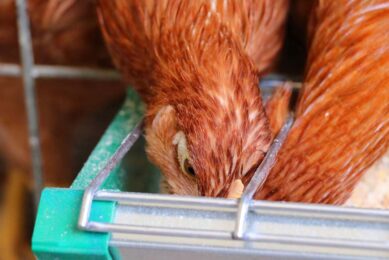EFSA on the wrong track
For the first time in history, the European Food Safety Authority (EFSA) has surveyed the layer sector in various countries of the European Union to determine the extent of salmonella infection.
For the first time in history, the European Food Safety Authority (EFSA) has surveyed the layer sector in various countries of the European Union to determine the extent of salmonella infection.
This is not to suggest that the EFSA has ignored the issue, on the contrary; it is one of the first major projects completed by this young institution. It monitored more than five thousand layer farms all over Europe and concluded that 30.7 percent of the 460.8 million layers tested were infected with some type of salmonella. 20.3 percent were infected with Salmonella typhimurium (St) and/or Salmonella enteritidis (Se), the most dangerous types of salmonella for human health.
The variation between countries is huge. Some of the new EU member countries have a lot of work to do to get infection levels down. Poland and the Czech Republic, for example, scored 77.2 percent and 65.6 percent respectively for all salmonella species and 55.9 and 62.5 percent respectively for Se and St. Spain showed 73.2 for all species and 51.6 percent for St and Se. Luxemburg and Norway participated voluntarily in the survey and had the best results seen with two zeros. The French, UK and Dutch farmers have spent a lot of money and energy to get their figures down. Their efforts have been successful, decreasing Se and St infection levels to eight percent.
The results of the survey will be used by the EFSA to develop a strategic plan to further reduce infection levels. Strangely enough, the EFSA does not want to set a base level that must be met by all countries, but wants a fixed percentage reduction in the number of farms infected. The EFSA considers one set level as an impossible target, due to the high variation in existing levels.
I have never understood the thought processes of some decision makers – this approach amounts to pleasing the bad guys and punishing the good ones. Clearly, a reduction of fifty percent of current infection levels is a much easier job for those farms with a high infection level than for those with a low level.
Especially since the advent of freedom of international transport and trade within the EU, bacteria can be easily transferred from infected to non-infected operations. If this is going to be the policy of EFSA, the European producers and consumers will have to wait much longer than necessary for transparency in food safety regulations – and thus for safe food.
Join 31,000+ subscribers
Subscribe to our newsletter to stay updated about all the need-to-know content in the poultry sector, three times a week. Beheer
Beheer








 WP Admin
WP Admin  Bewerk bericht
Bewerk bericht